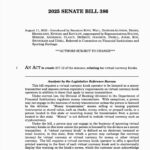Crypto Treasuries by Tech Billionaires
Tech billionaires Peter Thiel and Michael Saylor are setting up crypto company treasuries, but some financial experts caution that their strategies may involve significant risks.
Both Thiel and Saylor have made considerable investments in cryptocurrencies through their respective firms and investment vehicles: Saylor, via his software firm Strategy’s ongoing Bitcoin (BTC) purchases, and Thiel, through venture capital funding for crypto firms, alongside his exchange, Bullish, which became public earlier in August.
Each is not only aiming to grow his asset base but also to influence the cryptocurrency industry’s structure and regulations. However, there are notable differences between their strategies and perspectives on crypto, and companies that choose to establish crypto treasuries may expose themselves to a potential “death spiral” if prices fall.
Michael Saylor’s Approach
Michael Saylor, co-founder and chairman of software company Strategy (formerly MicroStrategy), has stirred up the financial realm with what some have called an “infinite money glitch.”
This “glitch” relates to Strategy’s method of acquiring Bitcoin, where it issues stock or equity-linked securities to buy Bitcoin and retains the asset on its balance sheet.
Typically, issuing more equity would dilute the stock’s value, but substantial Bitcoin purchases increase BTC’s price, thereby boosting Strategy’s valuation and enabling it to issue more debt.
This tactic has proven so effective for Strategy that it has spawned numerous imitators. The term “Bitcoin treasury company” has become increasingly prevalent in the financial sector, with 174 public companies reportedly holding Bitcoin, according to BitcoinTreasurys.net.
Saylor’s crypto strategy focuses exclusively on Bitcoin, aiming to accumulate as much of the cryptocurrency as possible, along with a nearly metaphysical view of the asset. In 2020, he remarked that Bitcoin “is a swarm of cyber hornets serving the goddess of wisdom, feeding on the fire of truth, exponentially growing ever smarter, faster, and stronger behind a wall of encrypted energy.”
In a speech at the Bitcoin Policy Institute in March, Saylor described Bitcoin as a “Newtonian network,” asserting that controlling it is crucial for the US to maintain its global dominance. He even proposed that a proactive Bitcoin accumulation strategy by the US government could eliminate the national debt, suggesting in other discussions that a national Bitcoin reserve is “manifest destiny for the United States.”
Peter Thiel’s Strategy
Thiel’s approach, while less revolutionary, offers greater diversity. In February 2025, Founders Fund, a VC firm co-founded by Peter Thiel in 2005 and known for backing companies like SpaceX, Palantir, and Facebook, invested $100 million in Bitcoin and another $100 million in Ether (ETH).
Which crypto investment strategy will ultimately be more effective in the long term:
- A) Michael Saylor’s Bitcoin-only strategy
- B) Peter Thiel’s diversified approach
The Founders Fund controls 7.5% of ETHZilla, a biotech company turned Ether investment vehicle, as well as a 9.1% stake in BitMine Immersion Technologies, for which Founders Fund helped raise $250 million in ETH.
Thiel has also supported a cryptocurrency exchange, Bullish, which went public on August 19 with a valuation of $1.15 billion across multiple stablecoins, including USDC (USDC) and PayPal USD (PYUSD).
While he is clearly committed to the crypto sector and is optimistic about its growth, Thiel has also expressed more measured skepticism, particularly regarding Bitcoin. Unlike Saylor’s view of Bitcoin as a “swarm of cyber hornets,” Thiel has questioned whether the asset may be “at least in part a Chinese financial weapon against the US.”
In summary, Thiel’s strategy embodies a more cautious and varied exposure to cryptocurrencies, while Saylor adopts a bold, all-in approach focused exclusively on Bitcoin.
Future of Crypto Strategies
The crypto industry may soon discover which strategy prevails. Recently, the Bitcoin treasury model advocated by Saylor has shown signs of losing momentum.
The model’s premise of “raise capital, convert to Bitcoin and wait for appreciation” may seem straightforward, but it leaves companies susceptible to the notorious volatility of Bitcoin markets.
If the price of BTC drops too close to the Bitcoin-per-share metric, or net asset value (NAV), of a firm’s stock, that stock loses the valuation buffer that was intended to enhance its price.
This situation can create a so-called “death spiral,” where a company’s market cap diminishes, which in turn affects its access to capital. Without buyers for the company’s equity or any lenders, the firm is unable to increase its holdings or refinance existing debt. Should a loan come due or a margin call arise, forced liquidations will follow.
Strategy’s NAV currently stands at 1.4 times its share price, having nearly been double the share price in February, when Carnegie Mellon University finance professor Bryan Routledge told Fortune, “There’s no rational explanation for that difference.”
Consequently, Strategy investors not only face risks from Bitcoin’s price fluctuations but also from “whatever is driving this difference between the net asset value and the price of the shares … That extra component is an extra source of risk.”
In recent weeks, Strategy’s stock price has declined alongside BTC, yet Saylor’s BTC acquisition efforts remain steadfast. The company purchased 3,081 BTC for $356.9 million during the week ending August 24.
While market conditions may seem stable for the moment and the White House maintains a favorable stance towards crypto, crypto winters are inevitable. When that occurs, the market will reveal which strategy endures.



















